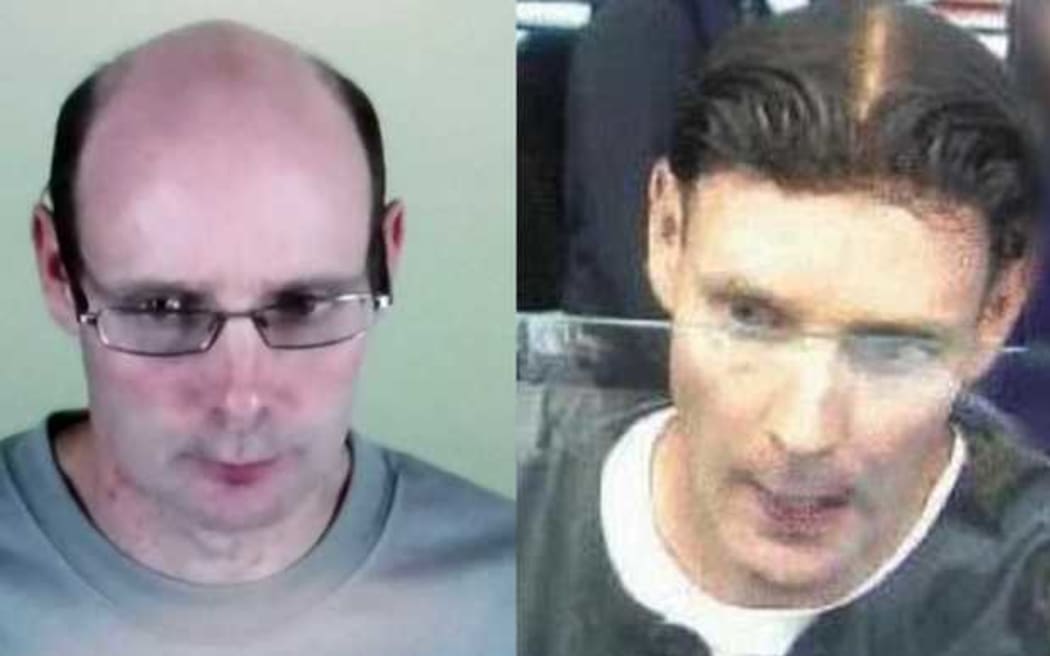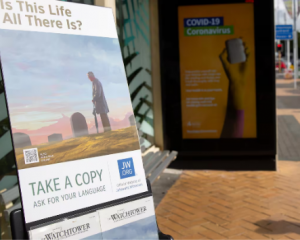
And he is arguing that he should be allowed a particular stereo behind bars despite being told no - and offered a number of other options to choose from.
Smith was in the High Court at Christchurch this morning before Justice Jonathan Eaton for a Judicial Review of Corrections' decision to refuse him the items.
Smith - jailed for life for murdering the father of a young boy he'd been convicted of sexually abusing - made international headlines in 2014 when he walked out of Spring Hill Prison on a 74-hour temporary release and boarded a flight to Chile.
He made his way to a backpackers in Rio De Janeiro, where a fellow guest recognised him from news reports and tipped off the Brazilian police.
He was arrested and eventually deported on immigration grounds back to New Zealand.
Smith regularly takes legal action against Corrections for what he sees as breaches of his rights in prison.
He has previously taken the agency to court over their refusal to let him wear a hairpiece in prison and not allowing family members to visit him in prison.
Today's fight was in relation to items Smith has been denied by Corrections - a Panasonic stereo and a necklace.
It is understood he was not allowed the necklace for safety reasons - to protect him and other inmates from potential dangers including strangulation.
Aside from prison-issued clothing, any personal items inmates want have to be approved by the particular prison director through an application process.
The stereo was deemed not compliant under Corrections' operations manual.

It is understood he was offered a number of other models but rejected those.
Instead, he took his battle for the items to court.
The convicted killer appeared before Justice Eaton via audio visual link from prison - wearing a full suit and tie, his infamous toupee and a watch.
He said the rules around the stereos were too restrictive and he believed Corrections needed to take a more discretionary approach.
"It has become very onerous on prisoners and their families to find a rule-compliant stereo - and expensive," he said.
"There needs to be a common sense margin of discretion."
Smith went on to say he had been allowed to wear a necklace for "a number of years".
However, his request to put a crucifix pendant on it was denied.
He conceded he could apply to have a "freestanding" crucifix but want it on the necklace so he could express his religious beliefs.
He argued he had a right to freedom of expression and said his case was "not dissimilar" from inmates who were allowed to wear manaia, pounamu and rosary beads.
Smith denied his crucifix would pose any risk to safety or security.
Smith claimed there was no lawful reason to withhold the items from him.
"The rules as they are currently are so rigid and they need to have a broader margin of decision-making," he said.
"The process is convoluted and lacks flexibility... and doesn't allow responsiveness to those more nuanced requests.
"It is not reasonable decision making... there is an expectation of fairness and reasonableness."
Crown lawyer James Watson said Corrections had to balance clear expression of inmates with safety, rehabilitation and reintegration.
He said necklaces had "never been authorised" under the rules "for good reasons".
"They do pose a safety risk in the prison environment," he said.
Regarding the stereo Watson said the rules were in place for a reason.
He agreed it was important for inmates to have access to radio news, music and other approved audio content.
However, radios must be a certain size to prevent volume issues and to ensure when two inmates shared a cell, each could have their own.
Watson said the radio rules were set to be reviewed to see if they were "fit for purpose".
Watson said the purpose of the prison system was to improve public safety and one of the ways Corrections did that was by making sure prisoners were managed safely.
"Rules will be made," he said.
"This emphasis on safety is clearly understandable, Corrections have a moral and legal duty… and has to be vigilant.
"Part of that is to ensure there is a regime that governs the property prisoners are entitled to in their cells."
Watson said crucifixes were approved for prisoners "under certain conditions".
Necklaces were not - and certainly, the two would not be approved together.
Smith will now be given time to prepare further submissions for the court.
The matter will be called again once he has done that, and Justice Eaton will then make his decision.
THE RULES: WHAT INMATES ARE ALLOWED IN NZ JAILS
While the rules can vary between different prisons, inmates are allowed a certain amount of approved personal property while they are in jail including a radio/CD or tape player, an electric jug or flask, a fan, a limited number of books and magazines and religious material.
Corrections provides televisions for inmates on a rental basis.
Generally, sentenced offenders wear prison-issued clothing only.
Each prison will store a small amount of inmate property - usually only their court or release clothes and "small valuables".
However, Corrections prefers prisoners send valuable items such as watches and jewellery to friends.
THE LIFE AND CRIMES OF PHILLIP JOHN SMITH
Smith's offending began in Carterton in the late 1980s.
A couple and their young children moved into Smith's street and he befriended their son.
Smith and the boy played computer games, rode motorbikes and did karate.
The boy's parents came to regard Smith as a "big brother" to their children.
In September 1995 they were "shattered" when their son revealed he had been molested by Smith over a three-year period.
He was just 10 when Smith's reign of terror began.
The boy was indecently assaulted, sexually violated and sodomised under threat of his family being killed if he told anyone.
The day the teenager broke his silence, his parents went straight to police.
They then packed up and moved to Wellington in the middle of the night to get away from Smith, who was charged soon after.
Smith, then 22 and a student, was charged and initially refused bail.
Police feared he would try to contact the victim, after finding in Smith's bedroom a list of schools in the Wellington suburb they had fled to.
He was granted bail after he appealed to the High Court, despite having 20 previous convictions including attempting to pervert the course of justice by intimidating witnesses in a previous case by threatening to firebomb them.
Two weeks later Smith was behind bars again, charged with extortion.
He had been blackmailing a West Auckland man who later committed suicide.
Near his body police found a letter from Smith, demanding $25,000 or he would publicly disclose allegations of sexual offending involving the man.
But after appearing in court on that charge, Smith escaped police custody. He was recaptured - and eventually bailed again.
A condition of his bail was that he not contact the 13-year-old or even attempt to trace the family.
The warning fell on deaf ears.
On December 11, 1995 Smith was driven from Carterton to the family's new home.
He crept into their backyard, where he lay in wait for three hours armed with a hunting knife and a rifle he had hidden near the home a week earlier.
He got into the house and the 13-year-old woke to find him standing over his bed.
His screams woke his parents, and his father ran to the room. Smith stabbed him repeatedly.
The 13-year-old escaped and ran to the closest police station for help.
Smith then took the boy's mother and brother from the house at gunpoint, refusing to let the woman tend to her dying husband. He was arrested soon after for murder.
At his trial in the High Court at Wellington, a jury heard that police found a "blueprint for murder" in Smith's bedroom.
Dubbed "Operation Smith", police described it as a "Rambo-style plan" to kill his former neighbours.
His conviction for the murder and prolonged sexual abuse did not stop him tormenting the family.
Smith called their home phone four times from prison, making threats.
A police search of his cell turned up a "hit list" of names from the 13-year-old's family.
SEXUAL HARM - DO YOU NEED HELP?
If it's an emergency and you feel that you or someone else is at risk, call 111.
If you've ever experienced sexual assault or abuse and need to talk to someone contact the Safe to Talk confidential crisis helpline on:
• Text 4334 and they will respond
• Email support@safetotalk.nz
• Visit https://safetotalk.nz/contact-us/ for an online chat
Alternatively contact your local police station - click here for a list.
If you have been abused, remember it's not your fault.
-By Anna Leask












